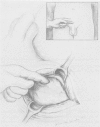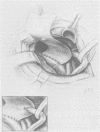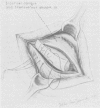Abstract
Repair of recurrent groin hernias is associated with a high incidence of repeat recurrences (2-19%). Reported herein is a 10-year experience of the management of recurrent groin hernias through the use of the preperitoneal approach with the addition of a reinforcing prosthetic mesh buttress. Two hundred and three recurrent groin hernias in 195 patients (192 men, three women) were treated between July 1975 and October 1986. The preperitoneal approach to the inguinal region was performed under regional anesthesia to define the nature of the recurrent hernia. Initial experience in a randomized trial between the use of local endogenous tissue repair versus endogenous repair with a prosthetic polypropylene mesh buttress demonstrated superiority of the latter in reducing repeat recurrences of anatomically defined direct or combined recurrent hernias. Pure indirect and femoral recurrences did not mandate mesh reinforcement. Long-term follow-up was available for 115 hernias (56%) in 102 patients (52.3%) over a period of 6 months to 10 years. Eight patients had repeat recurrences a mean of 30 +/- 22 months after repair. Six recurrences (four direct, two indirect) occurred in an early experience, when no mesh was used. Two recurrences (one indirect and one lateral to the mesh) representing 1% of all hernias (1.7% of those followed-up) have occurred after routine use of the mesh buttress, with the last re-recurrence seen in December 1982. Three ventral hernias (1.5%) occurred at the wound of entry, but none have occurred since placement of the mesh was modified to cover this wound. There were five (2.5%) wound infections and one (0.5%) hydrocele with no re-recurrences. It is concluded that the preperitoneal approach to recurrent groin hernias, together with the appropriate use of a reinforcing mesh buttress, is safe, allows anatomic definition of the hernial defect, and is followed by few repeated recurrences. The evolution of this approach during the last 10 years has made it the procedure of choice for the management of all recurrent groin hernias at the University of Illinois College of Medicine.
Full text
PDF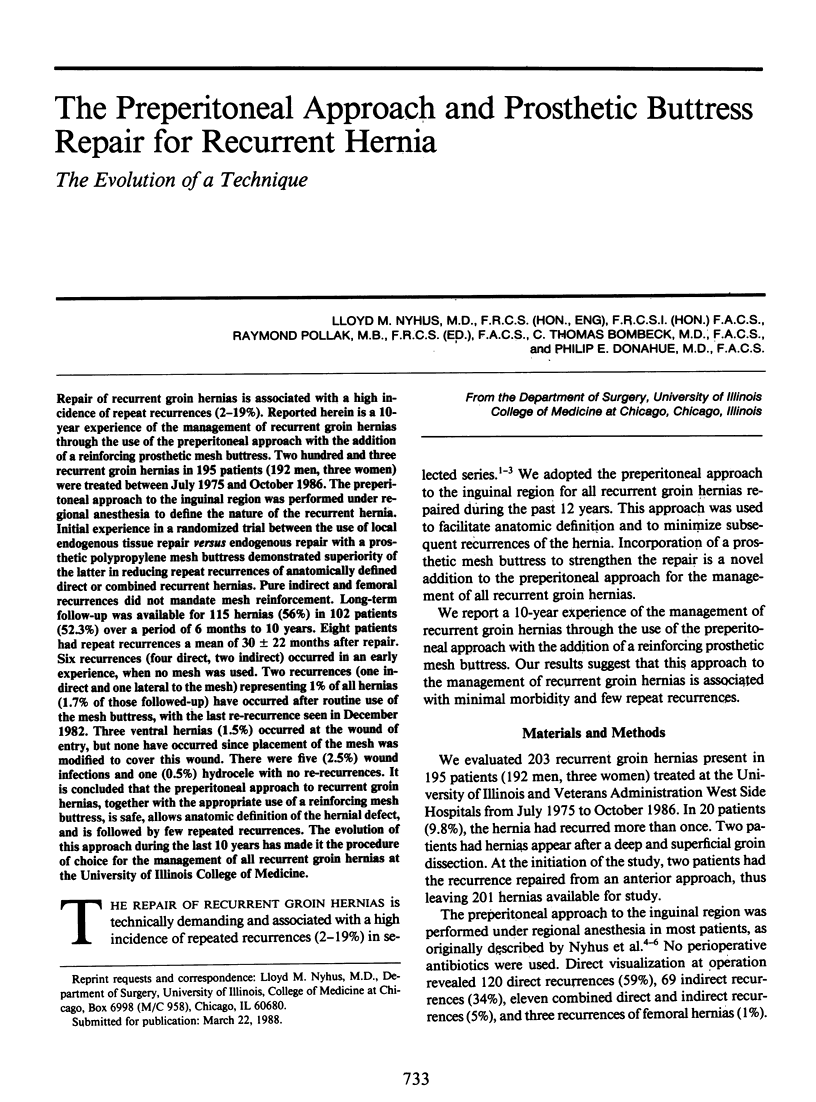
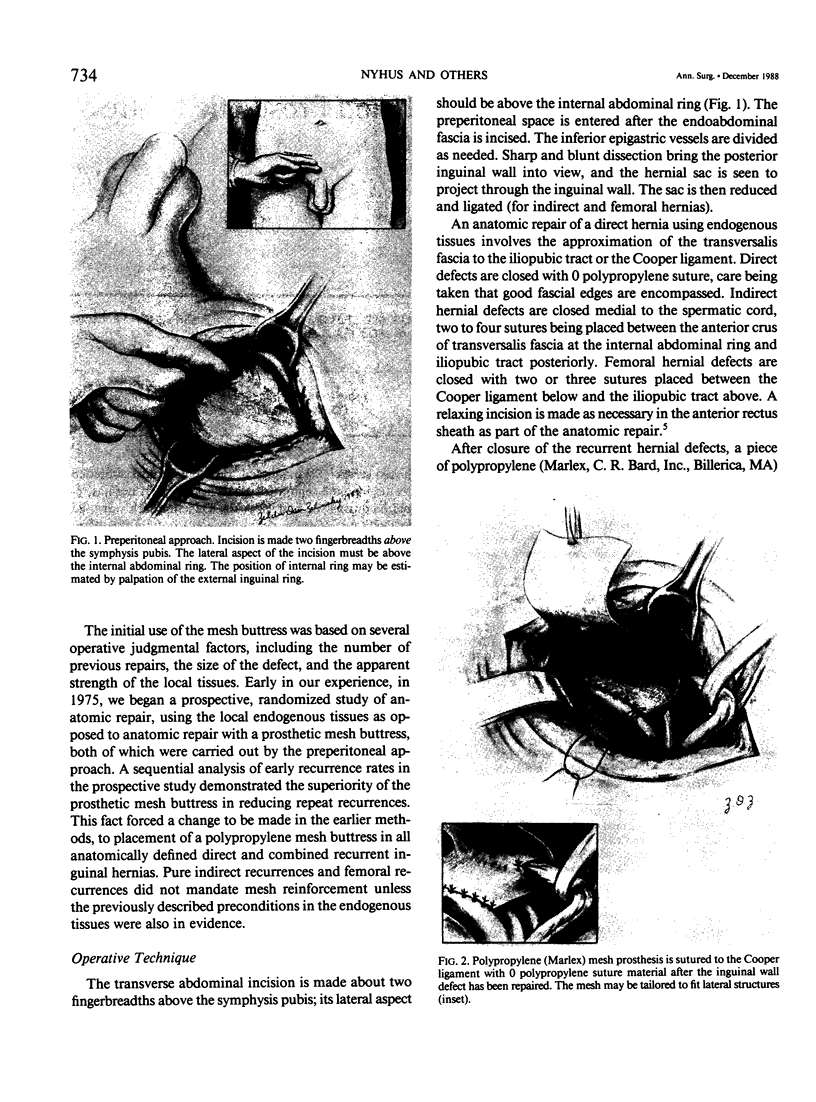
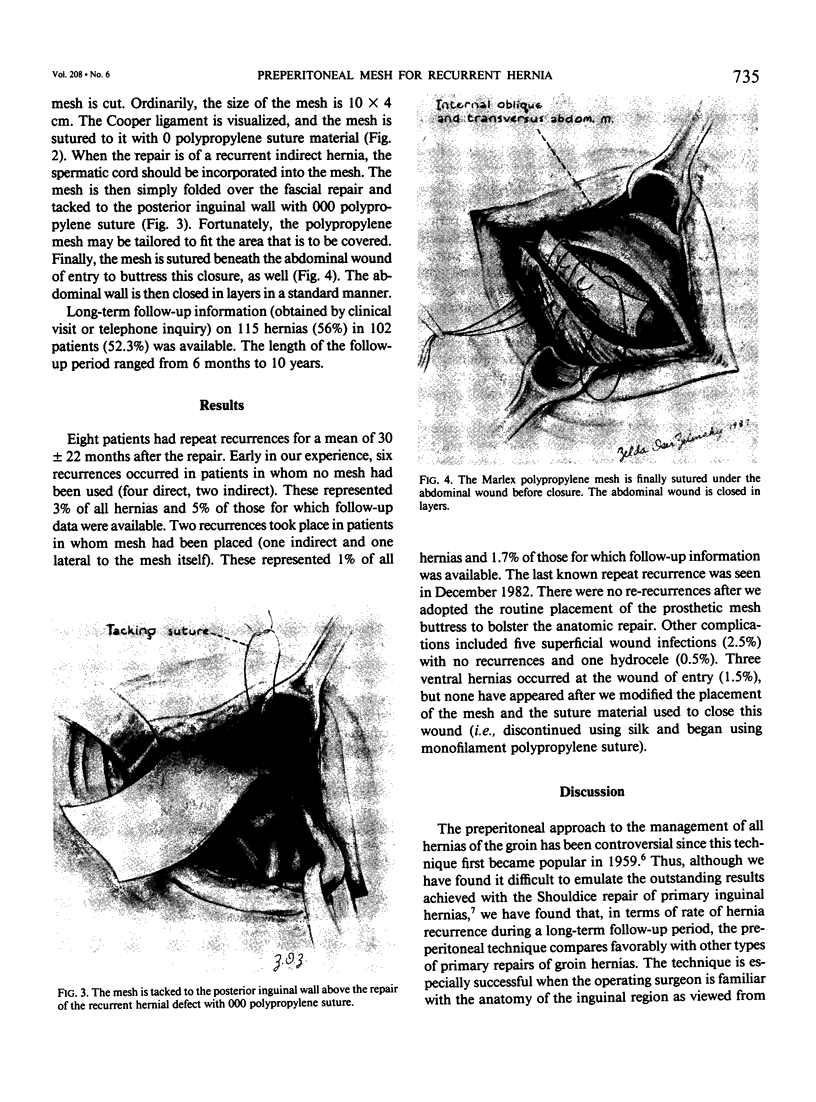
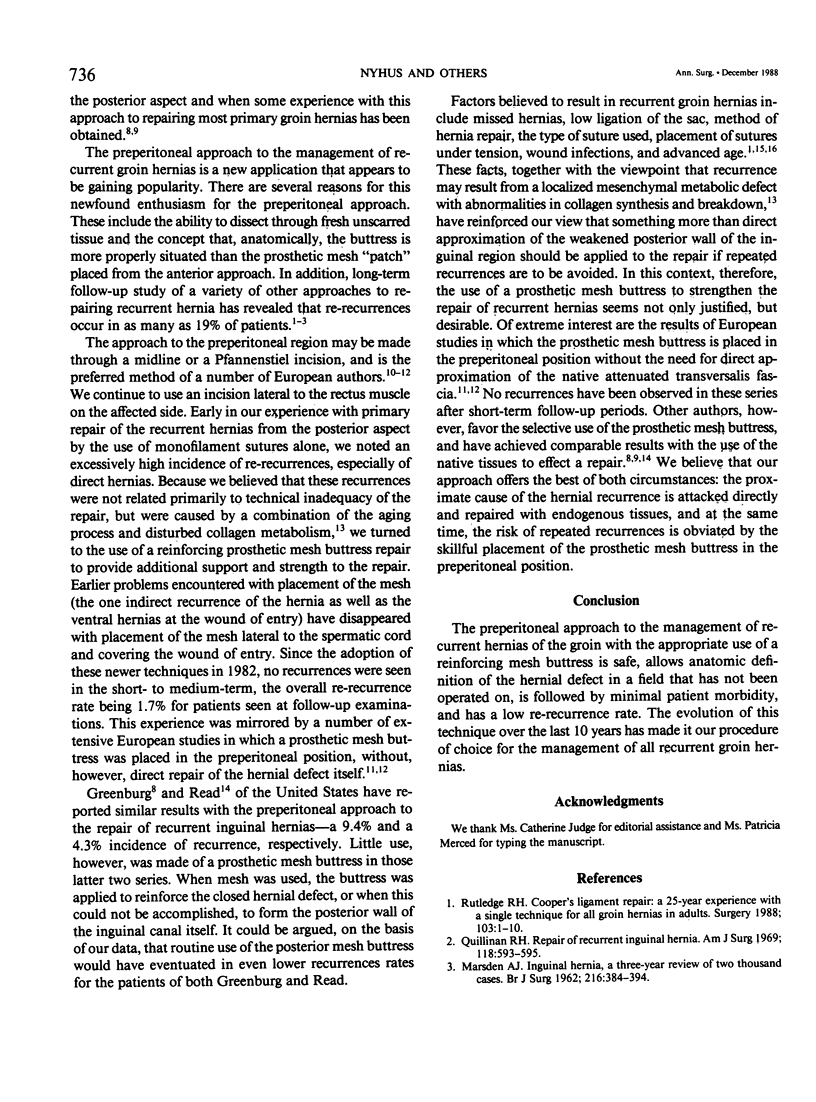
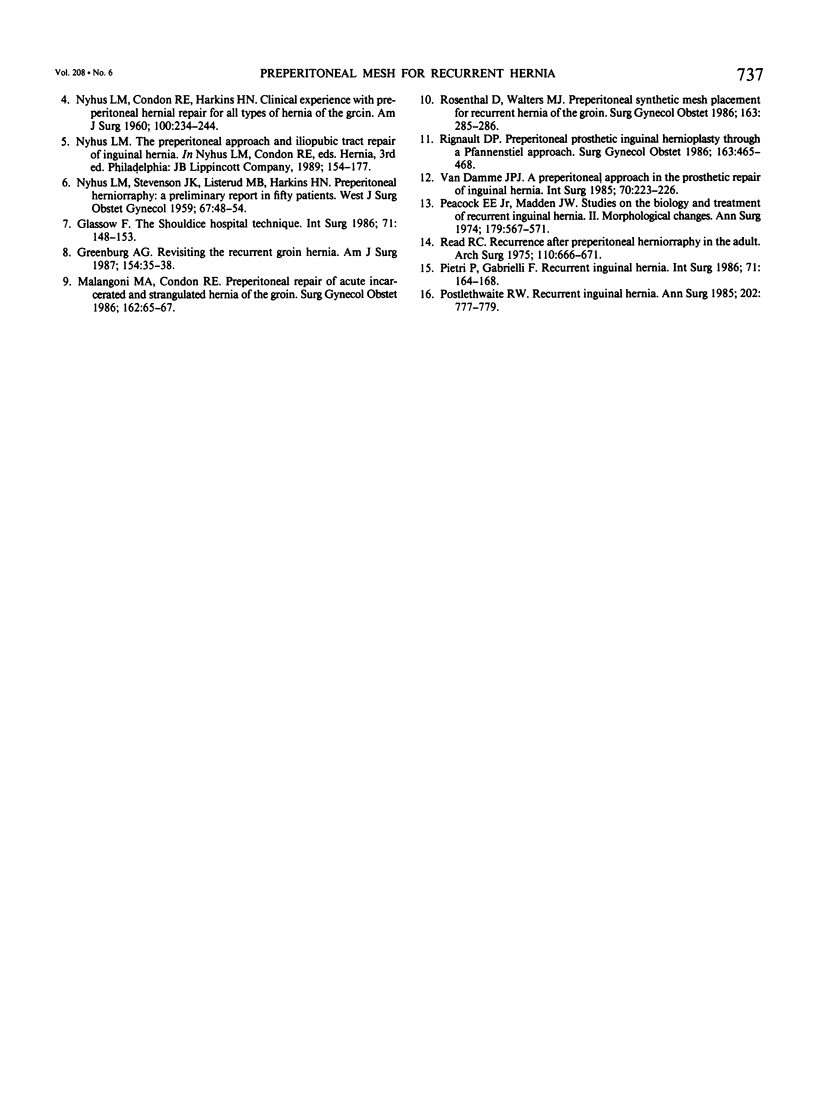
Images in this article
Selected References
These references are in PubMed. This may not be the complete list of references from this article.
- Glassow F. The Shouldice Hospital technique. Int Surg. 1986 Jul-Sep;71(3):148–153. [PubMed] [Google Scholar]
- Greenburg A. G. Revisiting the recurrent groin hernia. Am J Surg. 1987 Jul;154(1):35–40. doi: 10.1016/0002-9610(87)90286-8. [DOI] [PubMed] [Google Scholar]
- MARSDEN A. J. Inguinal hernia. A three-year review of two thousand cases. Br J Surg. 1962 Jan;49:384–394. doi: 10.1002/bjs.18004921607. [DOI] [PubMed] [Google Scholar]
- Malangoni M. A., Condon R. E. Preperitoneal repair of acute incarcerated and strangulated hernias of the groin. Surg Gynecol Obstet. 1986 Jan;162(1):65–67. [PubMed] [Google Scholar]
- NYHUS L. M., CONDON R. E., HARKINS H. N. Clinical experiences with preperitoneal hernial repair for all types of hernia of the groin, with particular reference to the importance of transversalis fascia analogues. Am J Surg. 1960 Aug;100:234–244. doi: 10.1016/0002-9610(60)90296-8. [DOI] [PubMed] [Google Scholar]
- NYHUS L. M., STEVENSON J. K., LISTERUD M. B., HARKINS H. N. Preperitoneal herniorrhaphy; a preliminary report in fifty patients. West J Surg Obstet Gynecol. 1959 Jan-Feb;67(1):48–54. [PubMed] [Google Scholar]
- Peacock E. E., Jr, Madden J. W. Studies on the biology and treatment of recurrent inguinal hernia. II. Morphological changes. Ann Surg. 1974 May;179(5):567–571. doi: 10.1097/00000658-197405000-00007. [DOI] [PMC free article] [PubMed] [Google Scholar]
- Pietri P., Gabrielli F. Recurrent inguinal hernia. Int Surg. 1986 Jul-Sep;71(3):164–168. [PubMed] [Google Scholar]
- Postlethwait R. W. Recurrent inguinal hernia. Ann Surg. 1985 Dec;202(6):777–779. doi: 10.1097/00000658-198512000-00019. [DOI] [PMC free article] [PubMed] [Google Scholar]
- Quillinan R. H. Repair of recurrent inguinal hernia. Am J Surg. 1969 Oct;118(4):593–595. doi: 10.1016/0002-9610(69)90192-5. [DOI] [PubMed] [Google Scholar]
- Read R. C. Recurrence after preperitoneal herniorrhaphy in the adult. Arch Surg. 1975 May;110(5):666–671. doi: 10.1001/archsurg.1975.01360110212037. [DOI] [PubMed] [Google Scholar]
- Rignault D. P. Properitoneal prosthetic inguinal hernioplasty through a Pfannenstiel approach. Surg Gynecol Obstet. 1986 Nov;163(5):465–468. [PubMed] [Google Scholar]
- Rosenthal D., Walters M. J. Preperitoneal synthetic mesh placement for recurrent hernias of the groin. Surg Gynecol Obstet. 1986 Sep;163(3):285–286. [PubMed] [Google Scholar]
- Rutledge R. H. Cooper's ligament repair: a 25-year experience with a single technique for all groin hernias in adults. Surgery. 1988 Jan;103(1):1–10. [PubMed] [Google Scholar]
- Van Damme J. P. A preperitoneal approach in the prosthetic repair of inguinal hernia. Int Surg. 1985 Jul-Sep;70(3):223–226. [PubMed] [Google Scholar]



